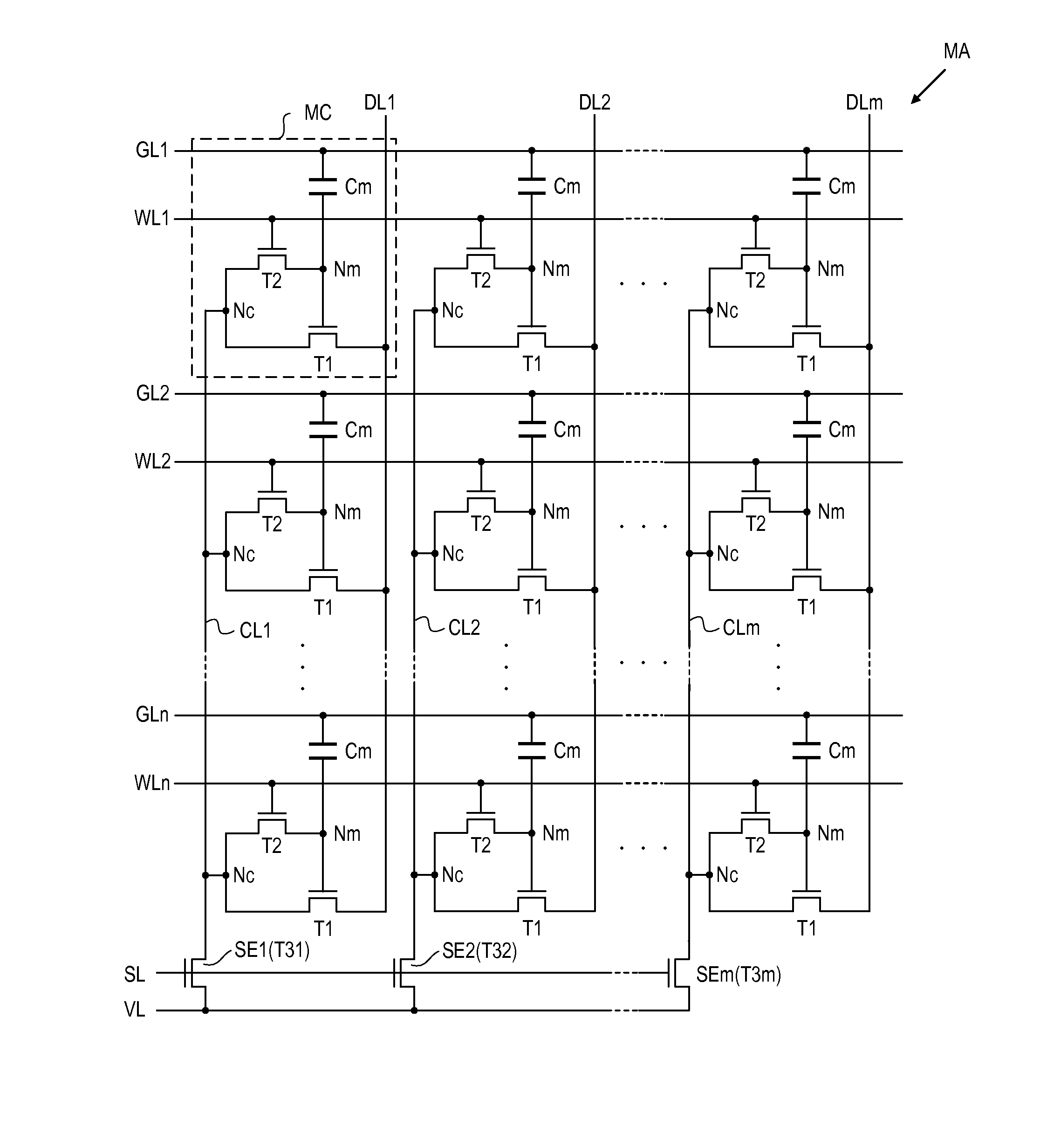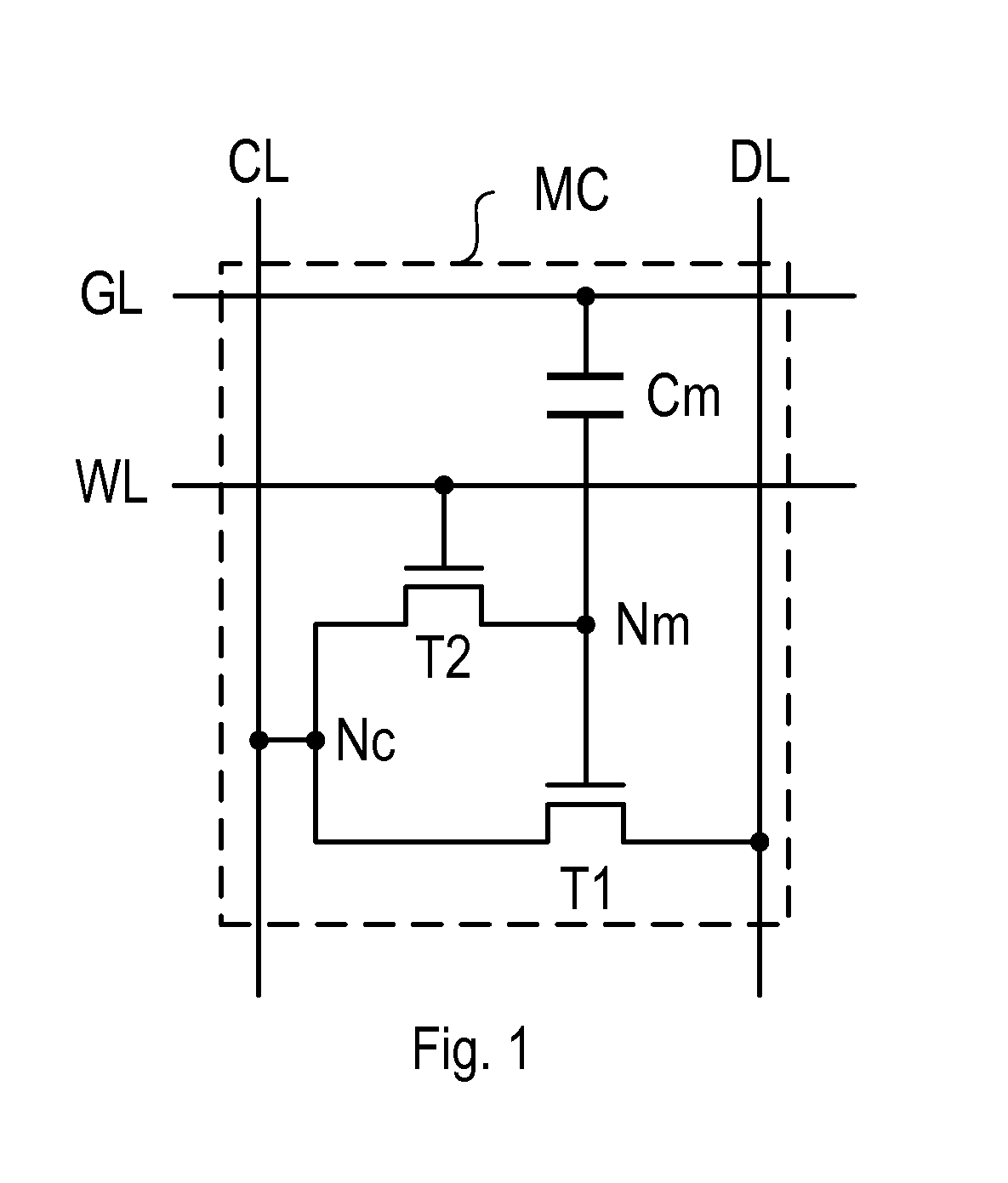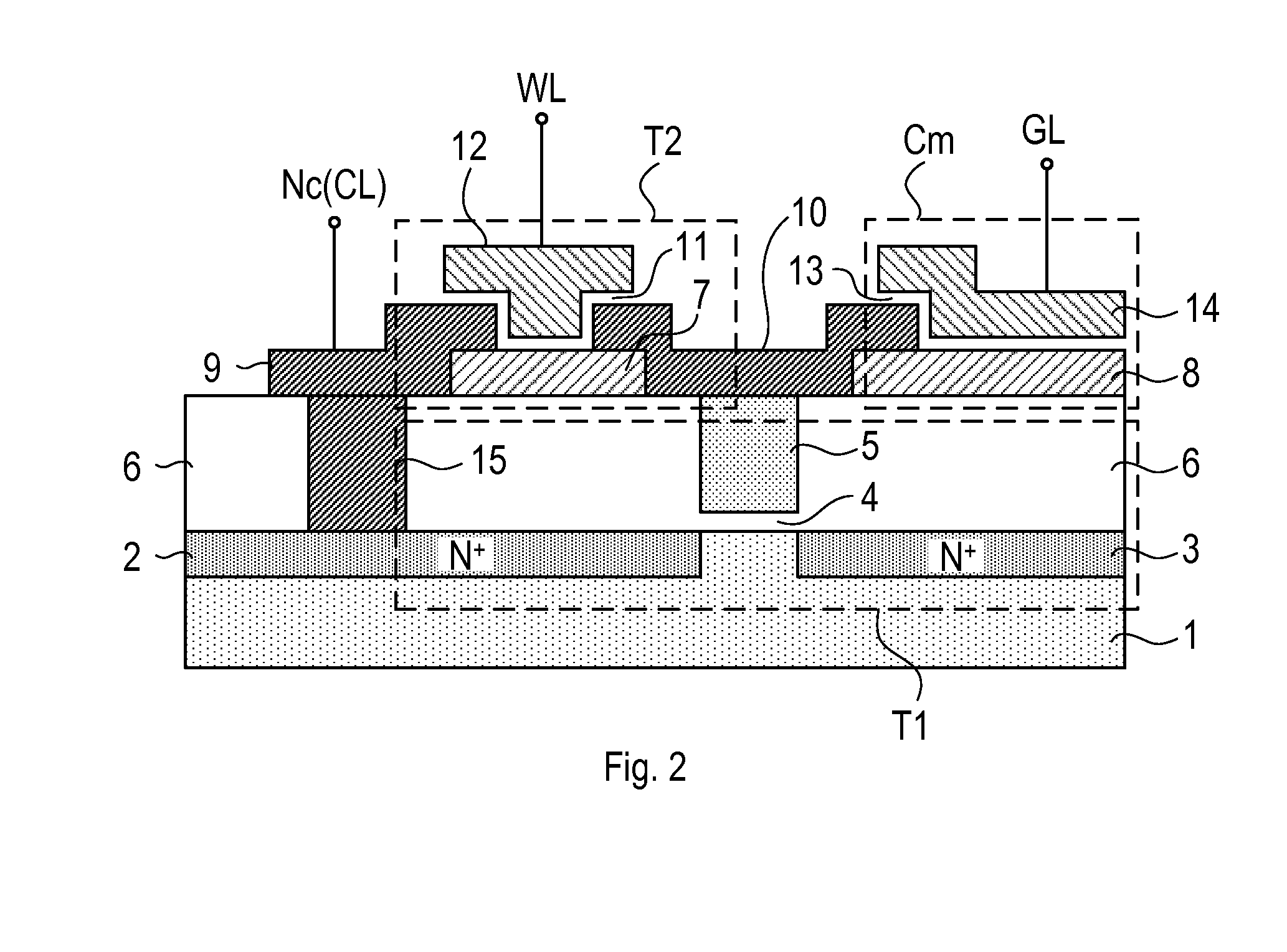Semiconductor memory device
a memory device and semiconductor technology, applied in semiconductor devices, digital storage, instruments, etc., can solve the problems of limiting the number of writing operations, high power consumption needed for retaining data during a standby period, and cannot be used in a case where the writing operation is not used, so as to reduce the voltage gap and reduce the power consumption for holding data.
- Summary
- Abstract
- Description
- Claims
- Application Information
AI Technical Summary
Benefits of technology
Problems solved by technology
Method used
Image
Examples
first embodiment
[0047]In the first embodiment, a description will be given to a semiconductor memory device in the present invention (hereinafter, simply referred to as the memory device), and a circuit configuration of a memory cell used in the memory device.
[0048]FIG. 1 shows an equivalent circuit diagram of a memory cell MC. The memory cell MC is provided with a first transistor element T1 composed of an insulated gate FET, a second transistor element T2 composed of an oxide semiconductor insulated gate FET, and a capacitive element Cm. In this embodiment, it is assumed that the first transistor element T1 is an n-channel MOSFET formed on a silicon substrate, and the second transistor element T2 is an n-channel thin film transistor (TFT).
[0049]In addition, as shown in FIG. 1, in the memory cell MC, a memory node Nm is formed at a connection point of a gate electrode of the first transistor element T1, a source electrode of the second transistor element T2, and one end of the capacitive element C...
second embodiment
[0071]In the second embodiment, a detailed description will be given to the initialization operation, the writing operation, and the reading operation, for the memory cell array MA, in accordance with the circuit configuration of the memory cell MC, the memory cell array MA, and the memory device 20 described in the first embodiment. In the following description, it is assumed that a plurality of bits of the input data inputted as the data input signal DIN are divided to every two bits, and one of four-value data (0 to 3) each having the two bits is written in the one memory cell MC, and one of the four-value data written in each memory cell MC is read. In addition, according to this embodiment, the voltage state of the memory node Nm which has been initialized in the initialization operation is allocated to the one data value “3” in the four-value data, but the initialized voltage state is not necessarily allocated to the one data value.
[0072]In addition, in the following descripti...
third embodiment
[0121]The description has been given to the reading operation in the case where the reading circuit 26 is the voltage detection type sense amplifier in the second embodiment, but in the third embodiment, a description will be given to the reading operation in the case where the reading circuit 26 is the current detection type sense amplifier, with reference to FIGS. 9A to 9C and 10. The initialization operation and the writing operation are the same as descried in the second embodiment. FIG. 10 shows a timing chart in a case where the reading operation is performed for the one selected row after the writing operation has been performed, by selecting one or more data lines DL in the same manner as in FIG. 8. FIGS. 9A to 9C are also applied to the case where the reading circuit 26 is the current detection type sense amplifier.
[0122]In the case where the reading circuit 26 is the current detection type sense amplifier, a voltage condition applied to each signal line is the same as that...
PUM
 Login to View More
Login to View More Abstract
Description
Claims
Application Information
 Login to View More
Login to View More - R&D
- Intellectual Property
- Life Sciences
- Materials
- Tech Scout
- Unparalleled Data Quality
- Higher Quality Content
- 60% Fewer Hallucinations
Browse by: Latest US Patents, China's latest patents, Technical Efficacy Thesaurus, Application Domain, Technology Topic, Popular Technical Reports.
© 2025 PatSnap. All rights reserved.Legal|Privacy policy|Modern Slavery Act Transparency Statement|Sitemap|About US| Contact US: help@patsnap.com



